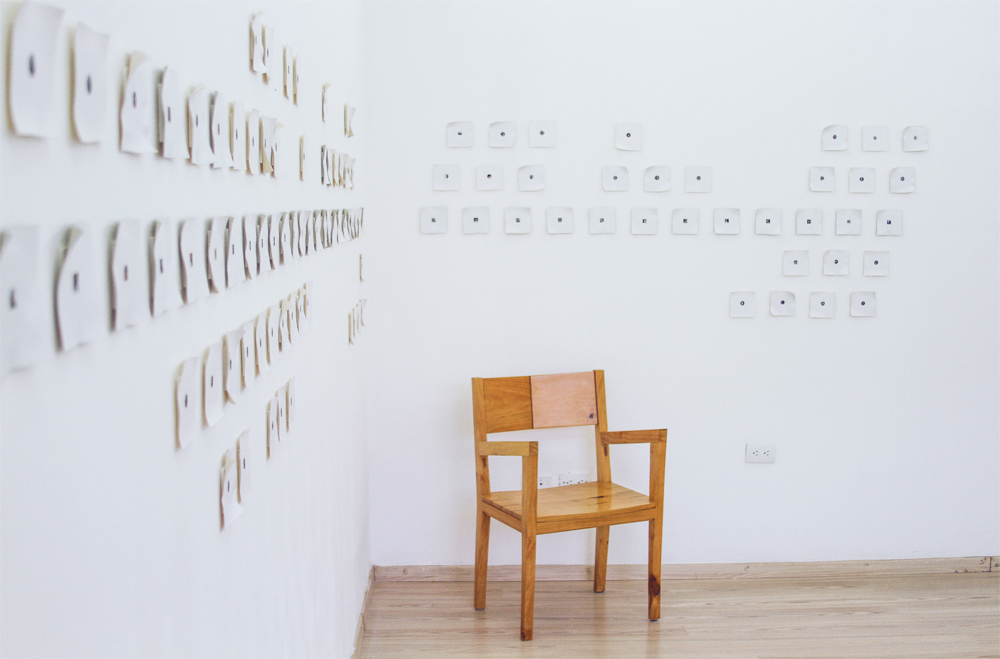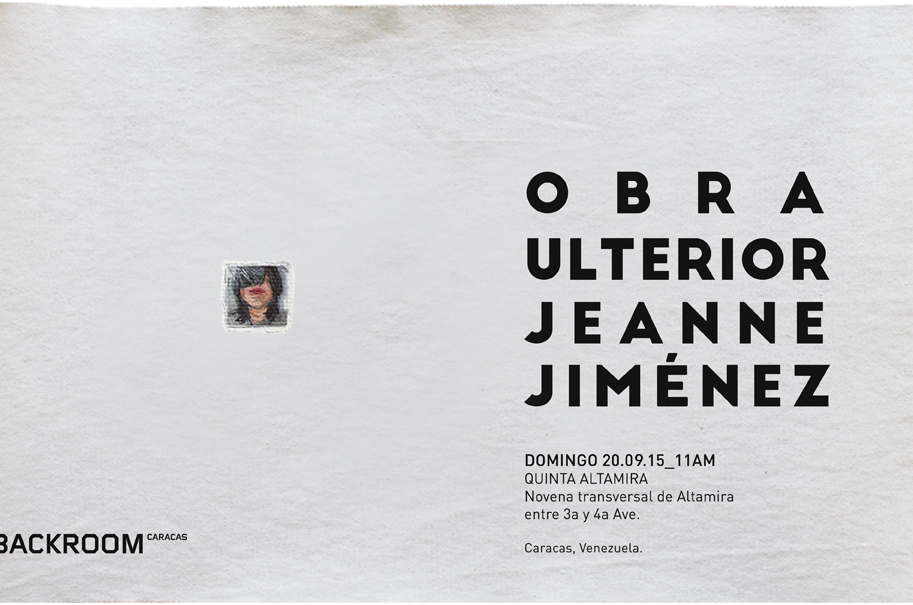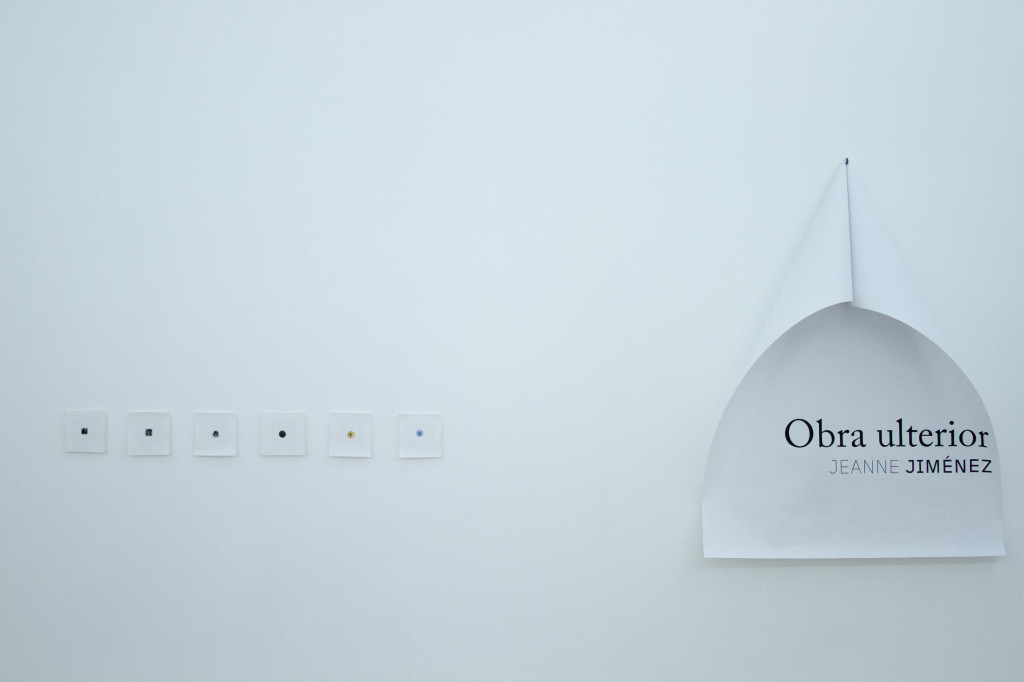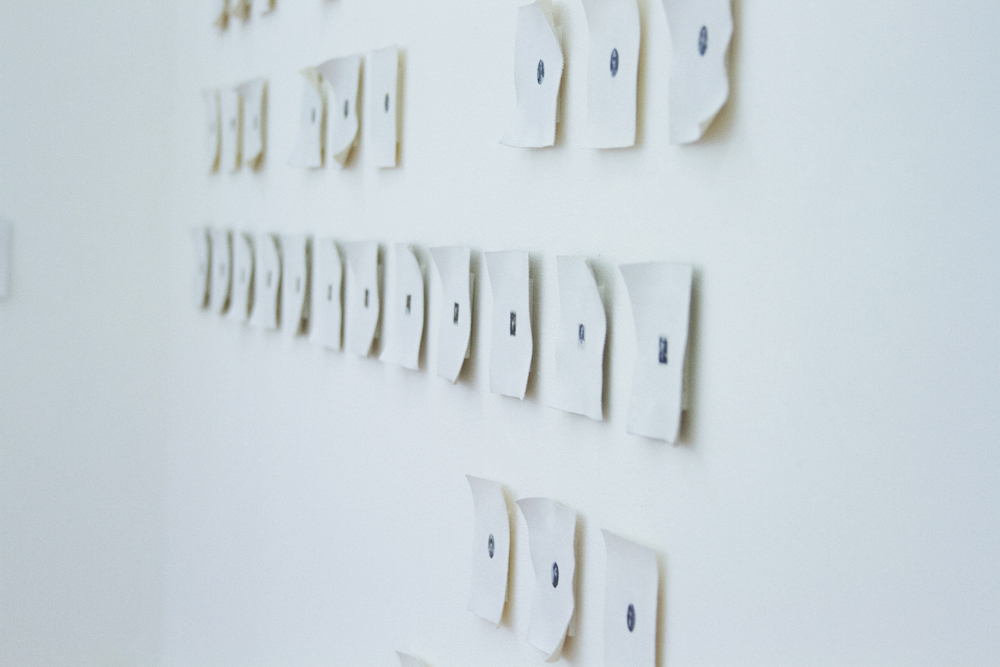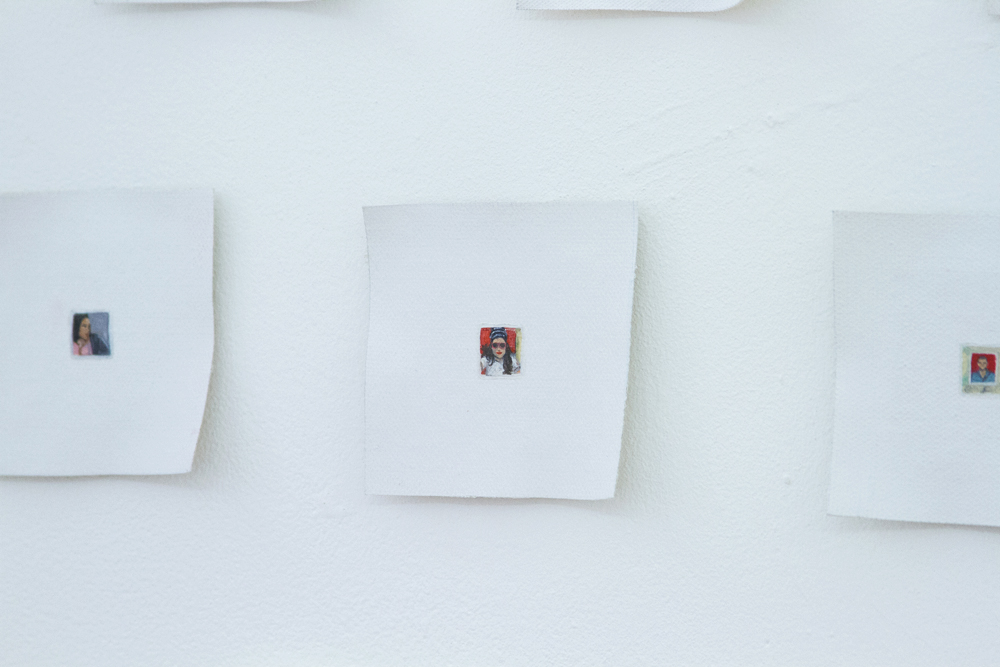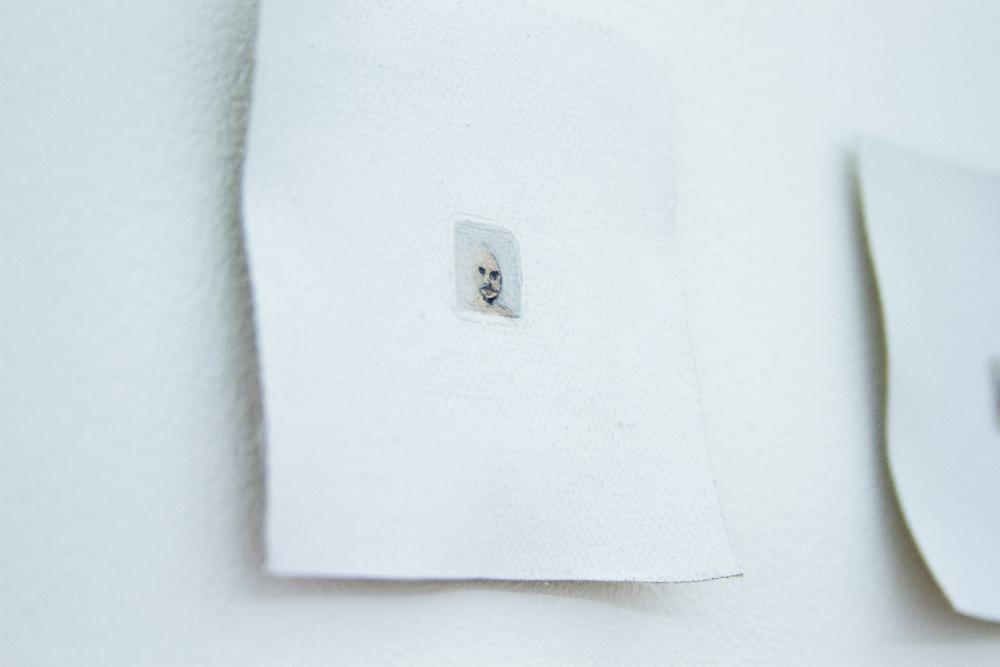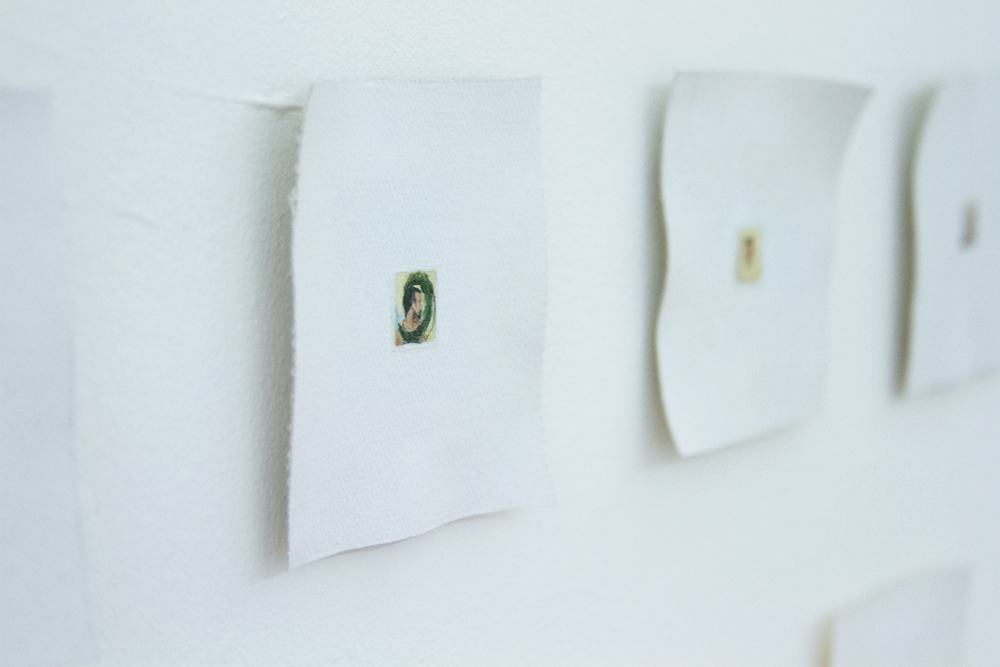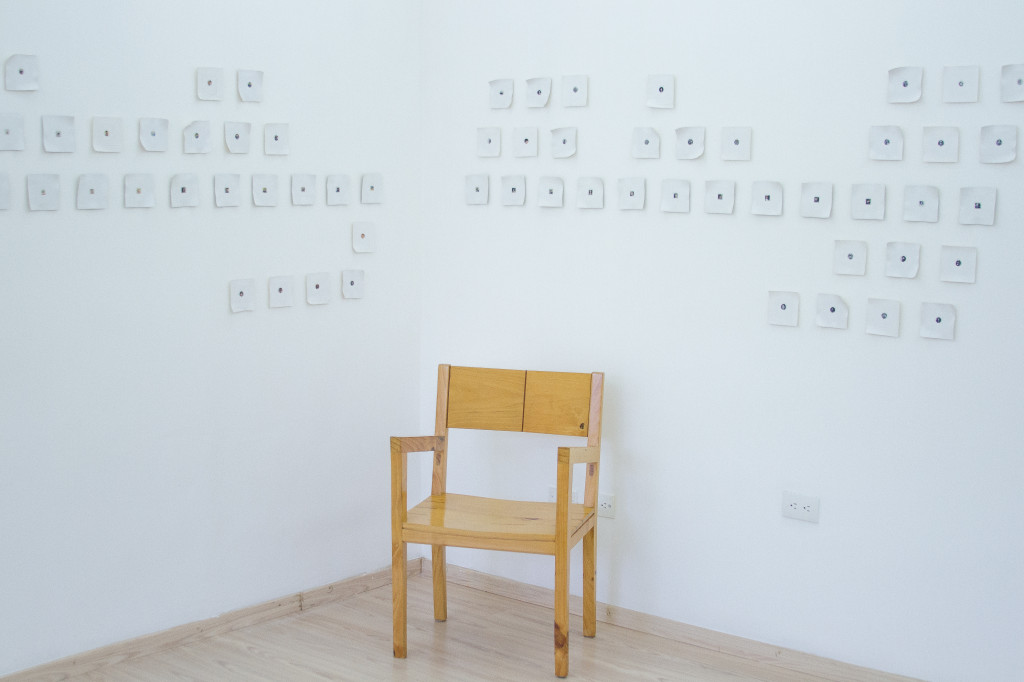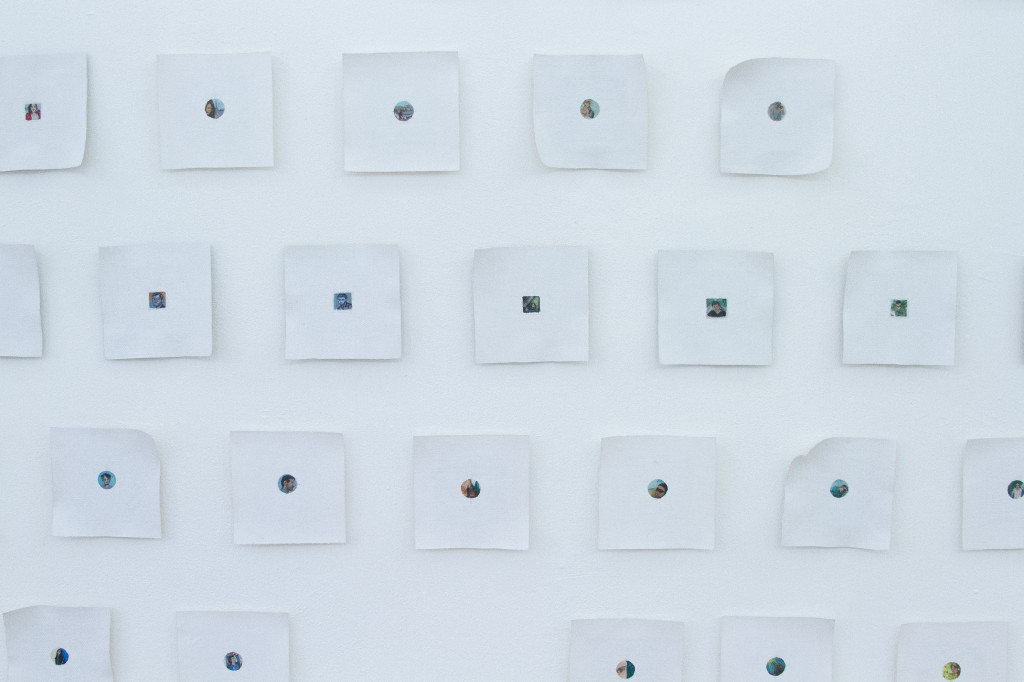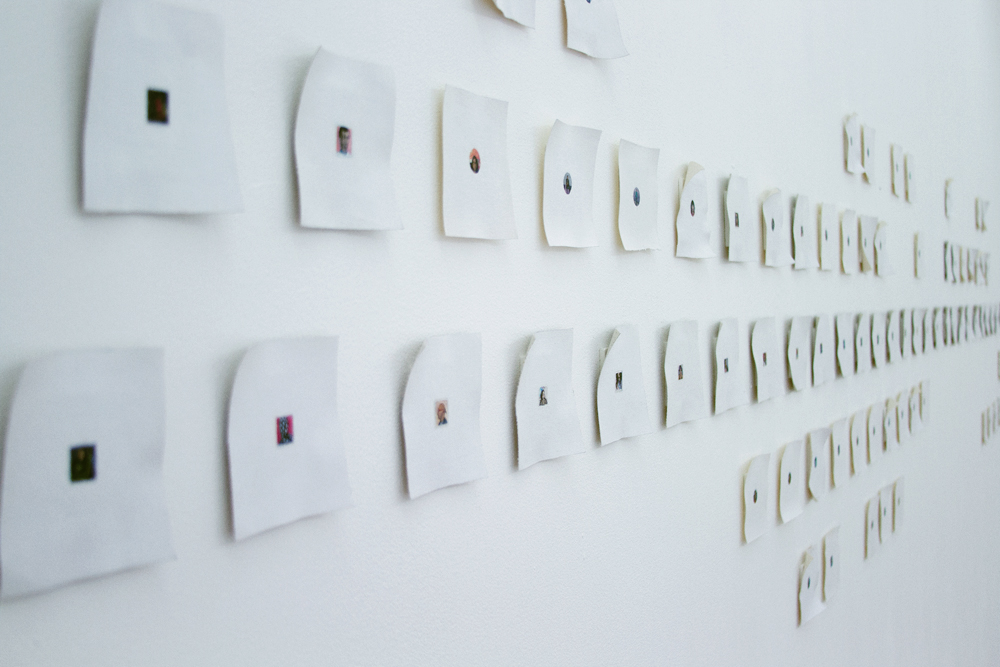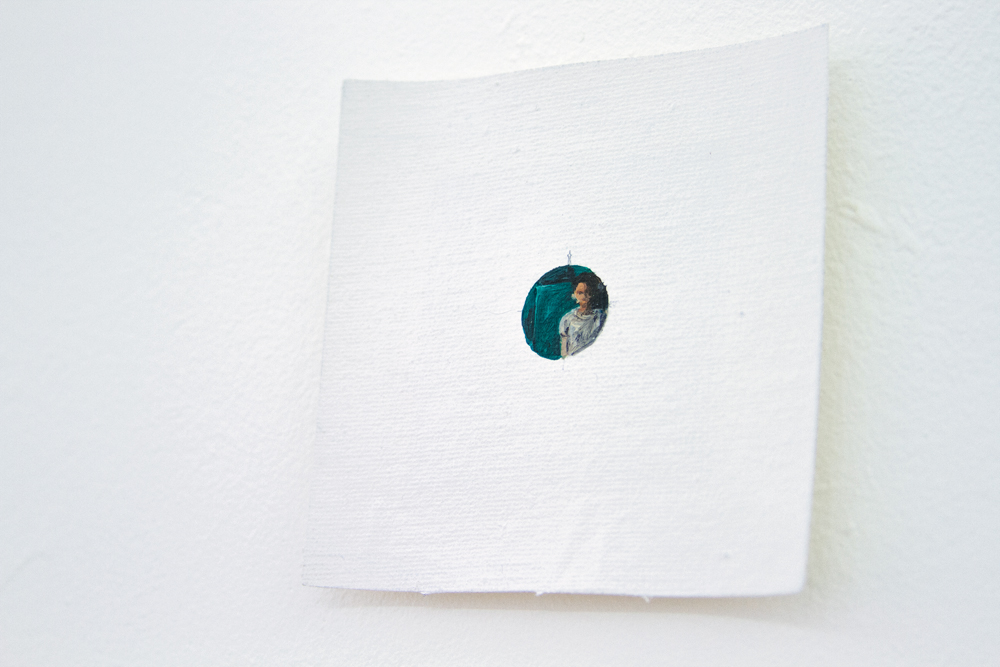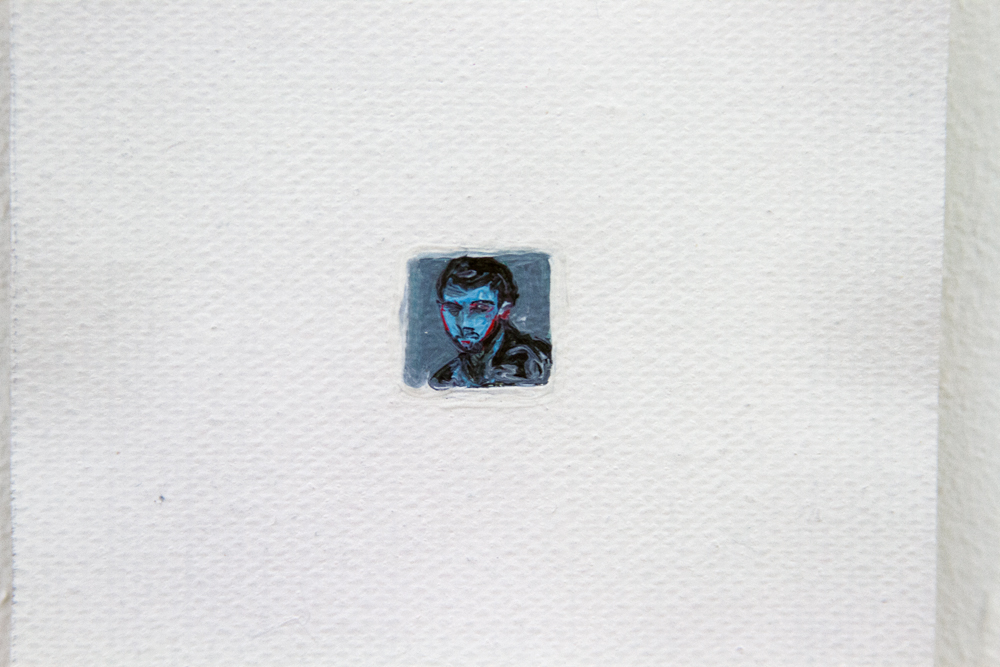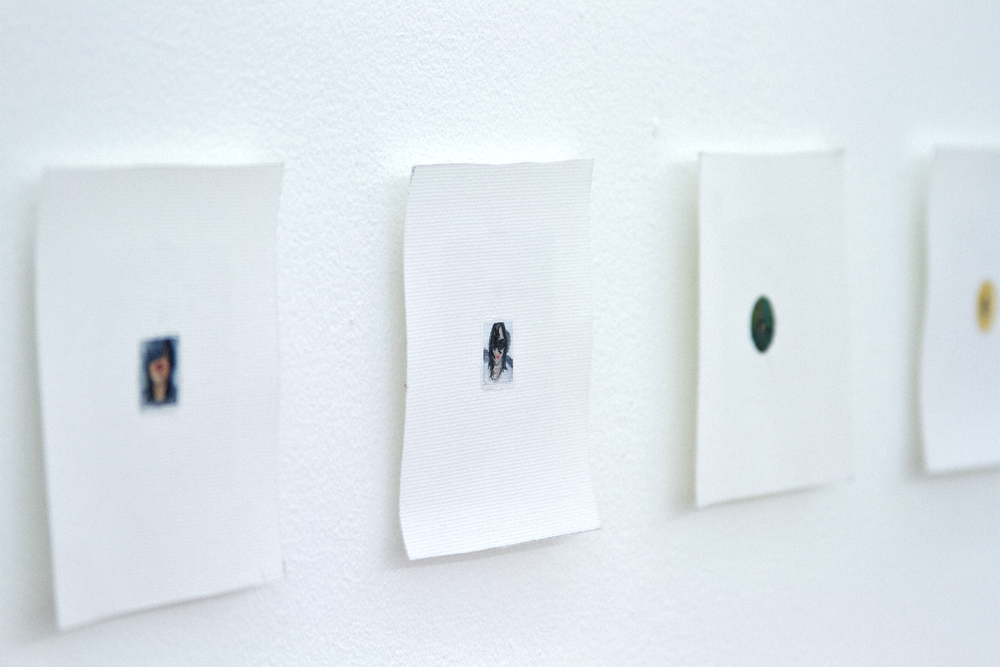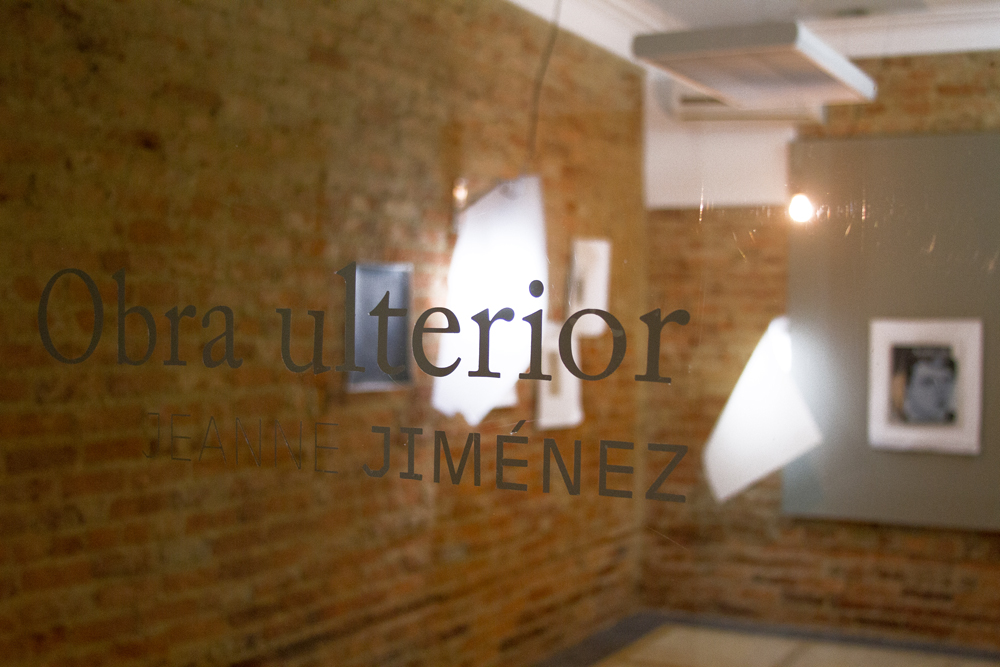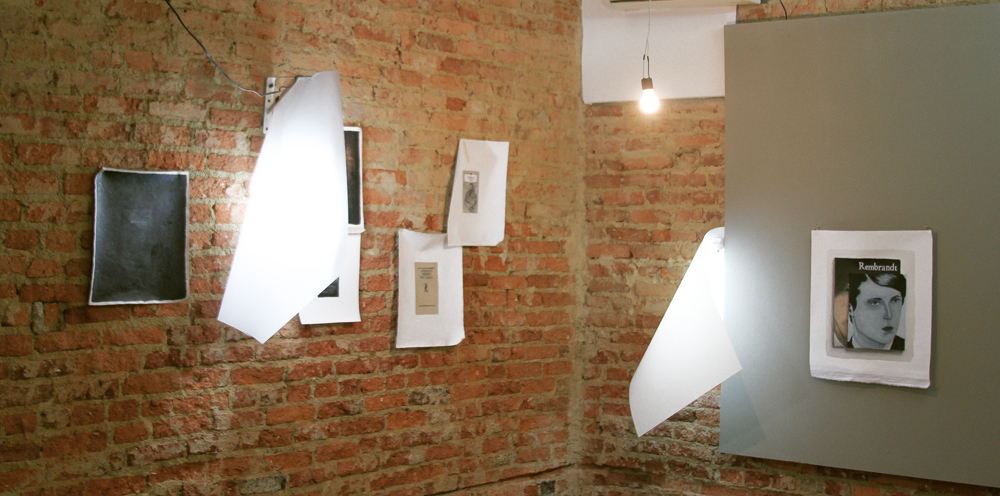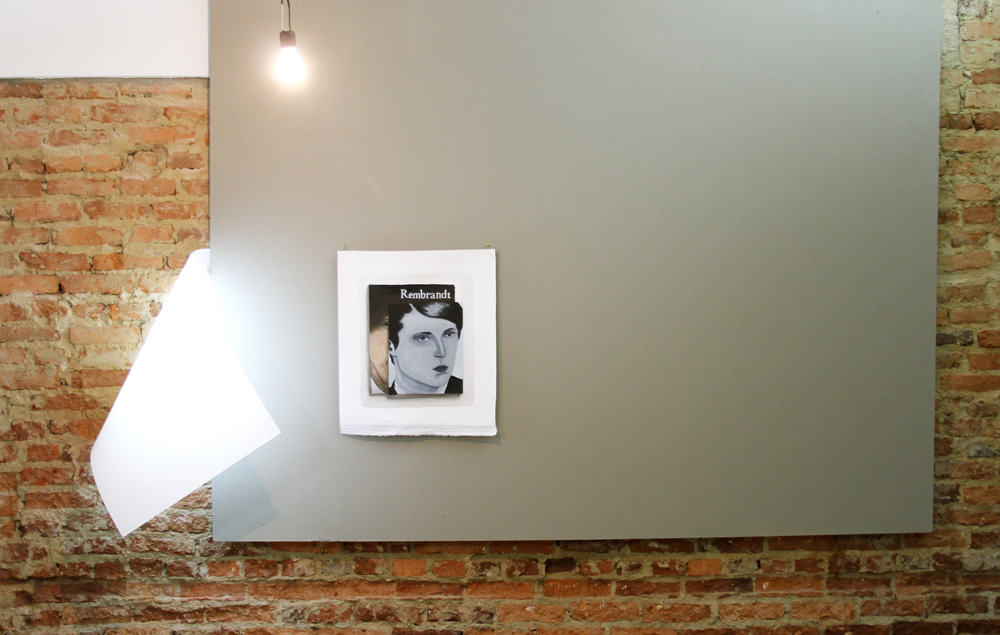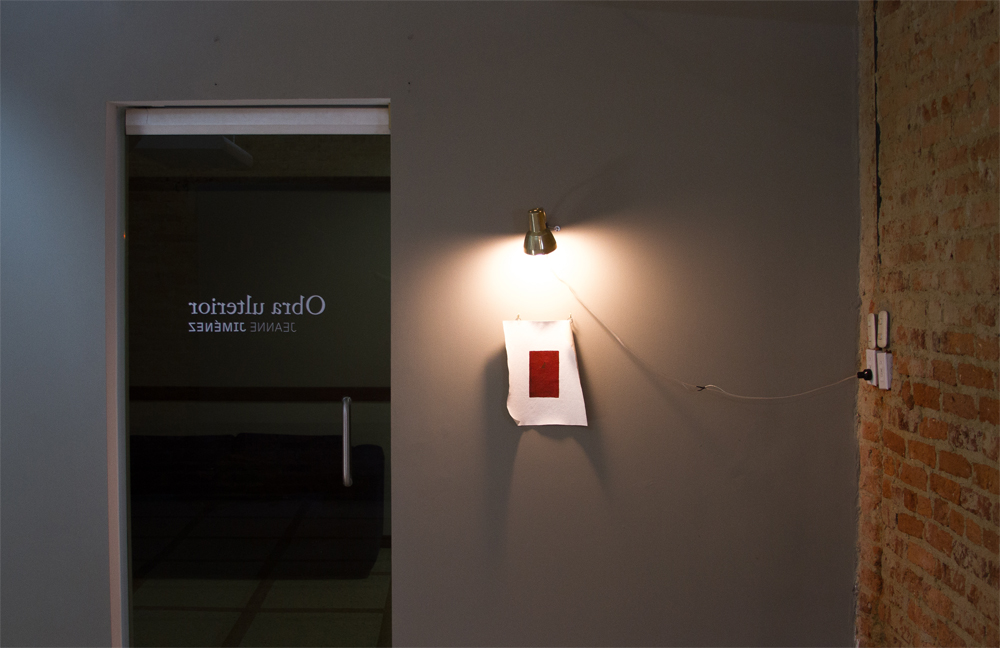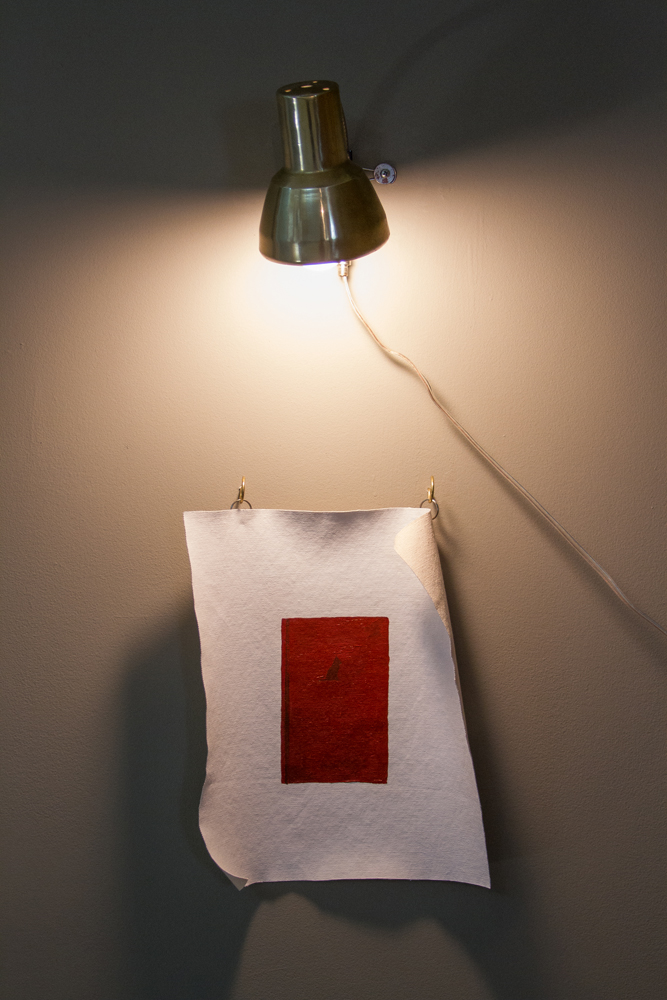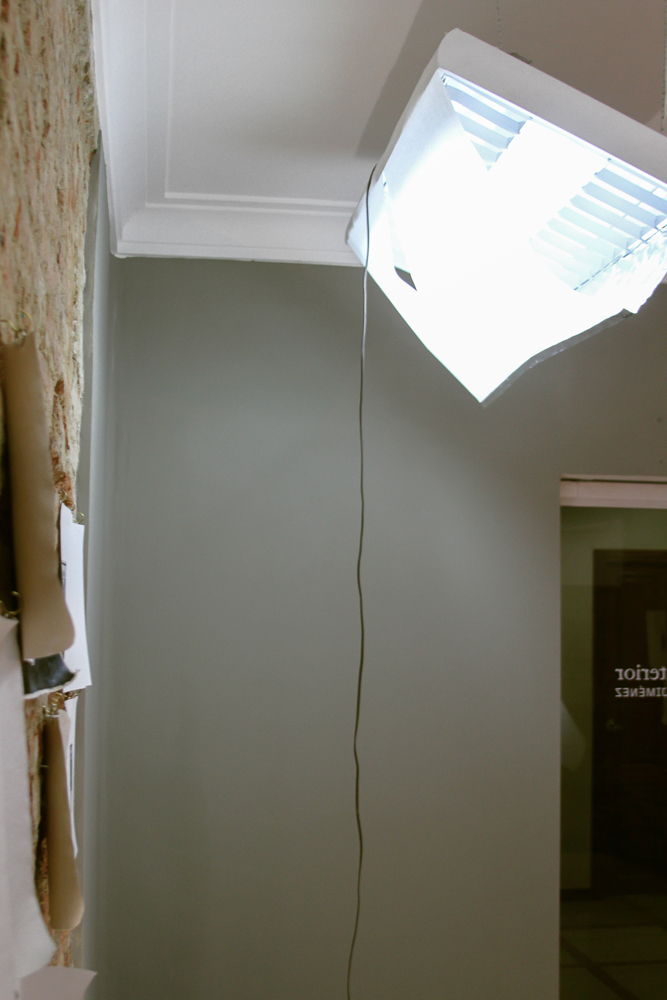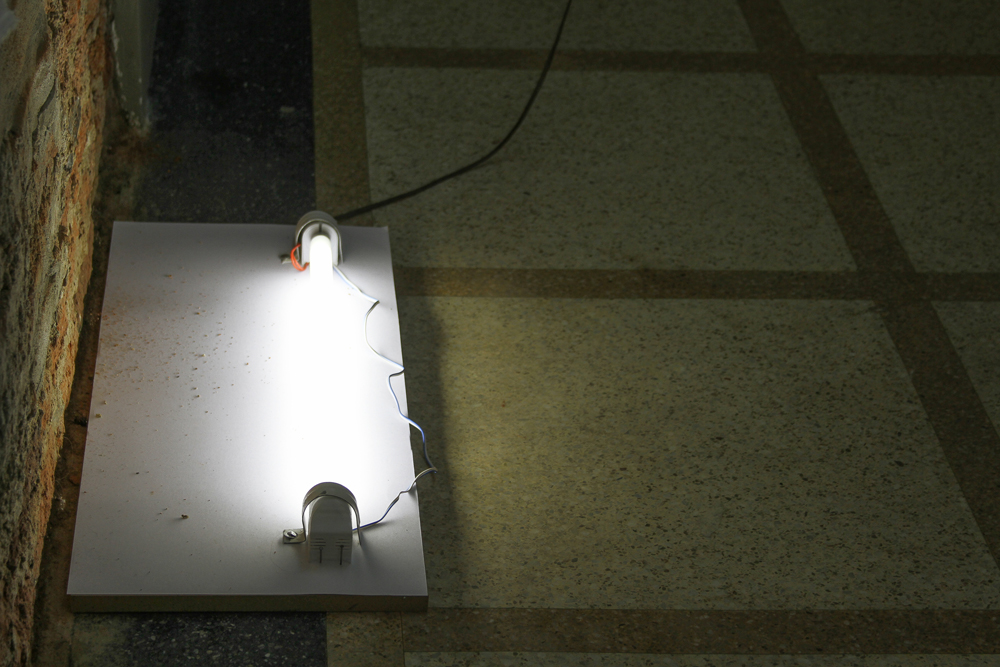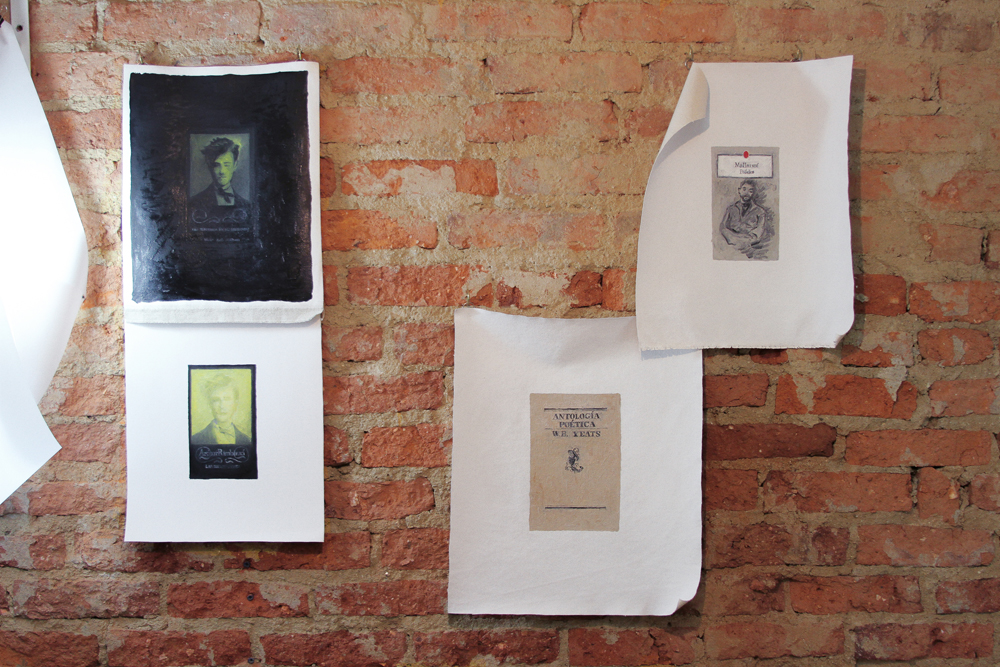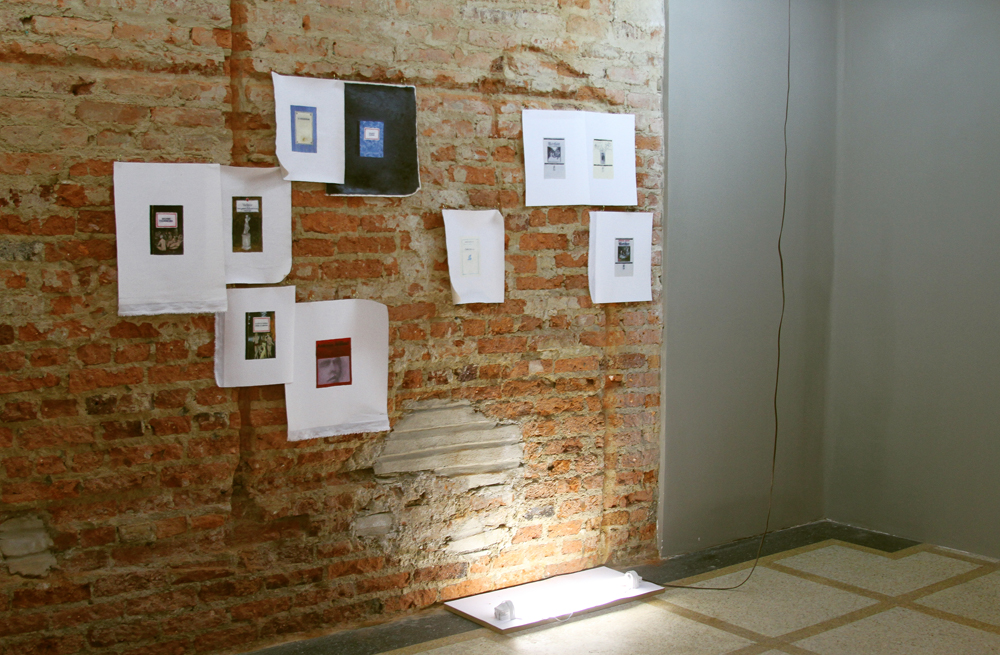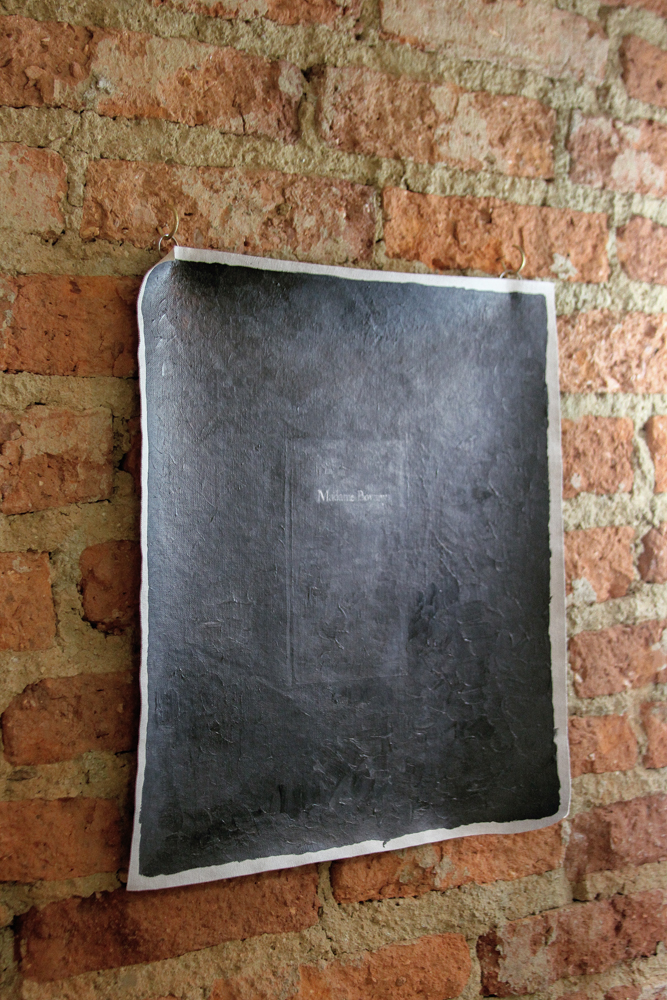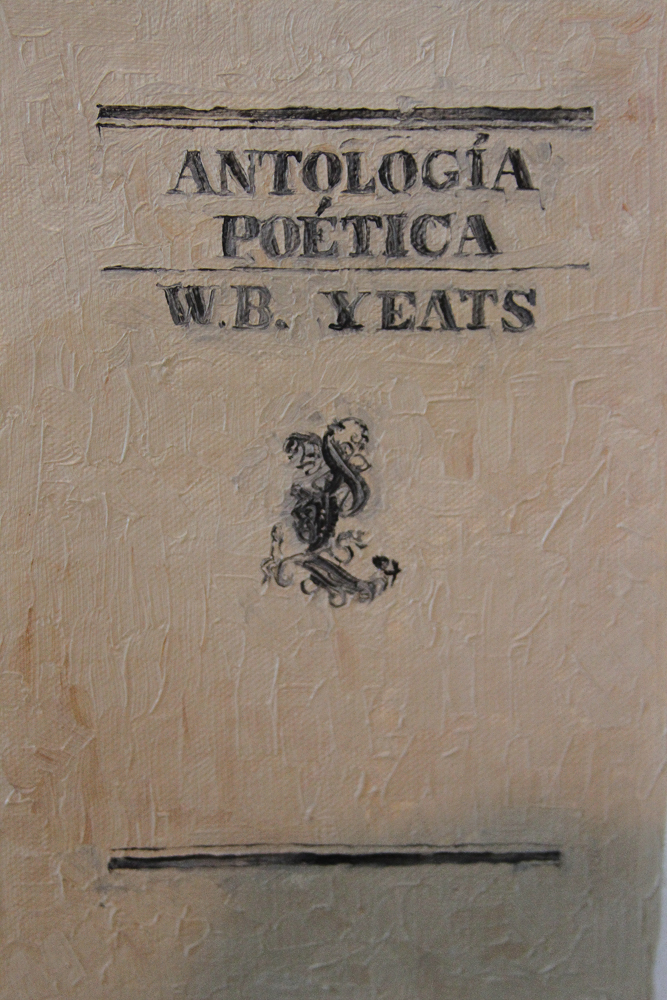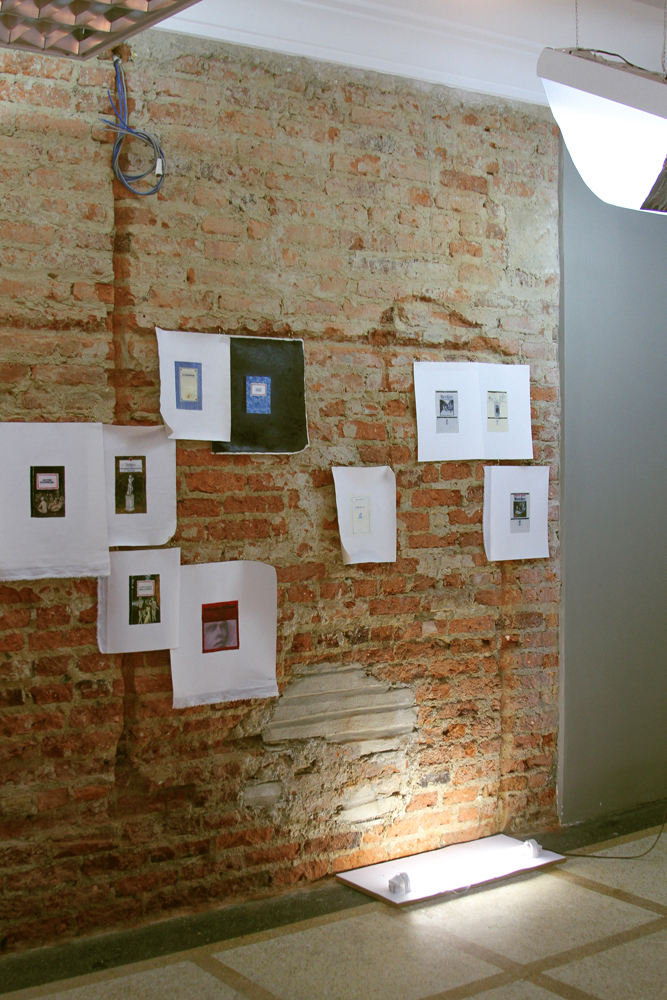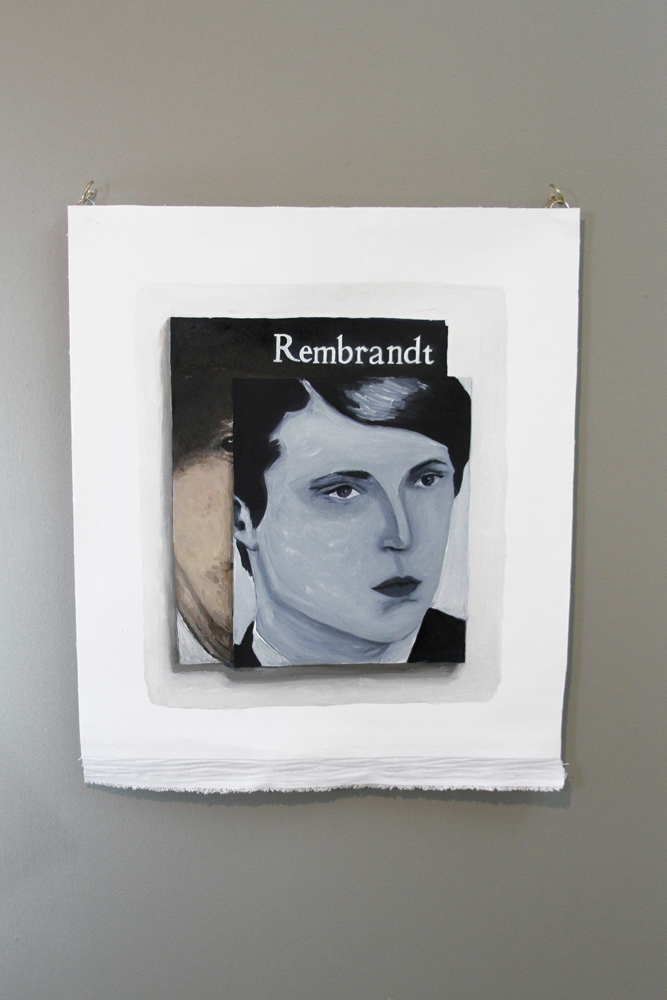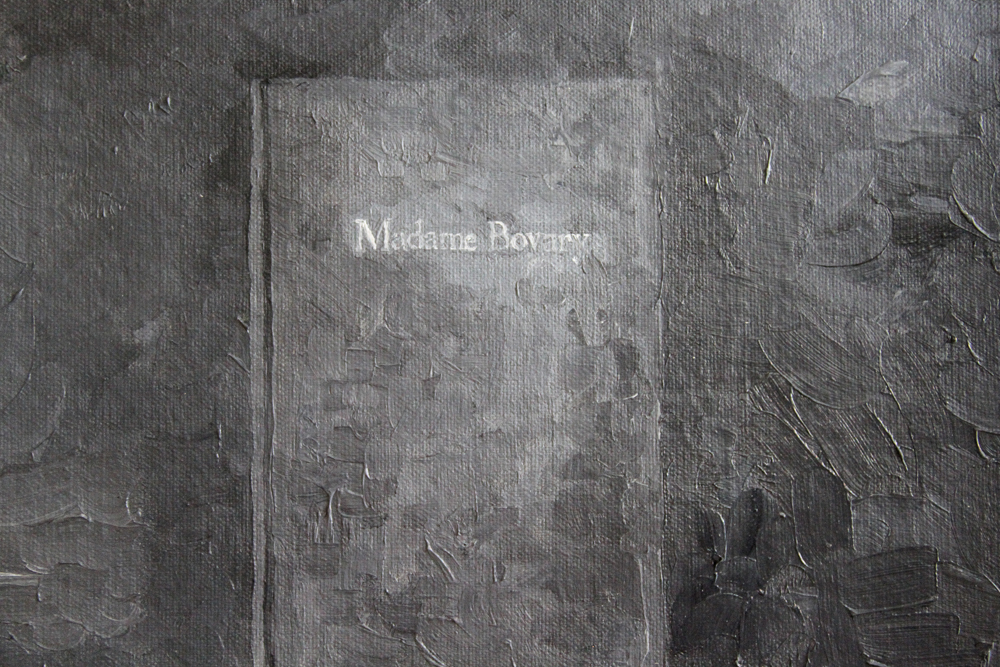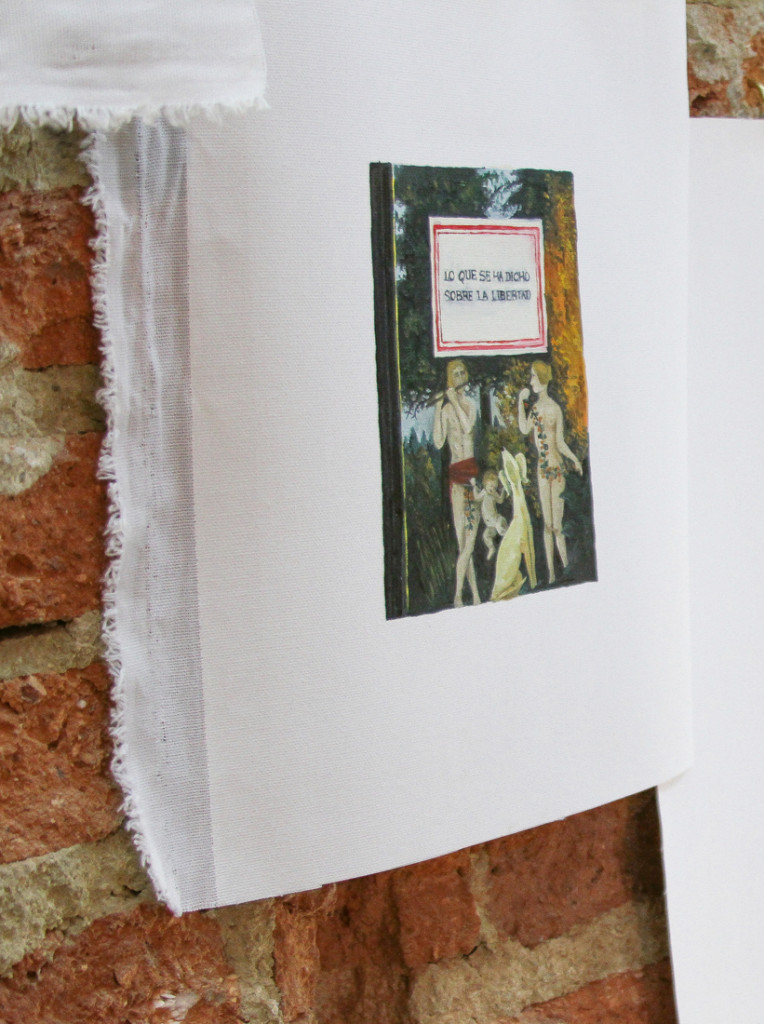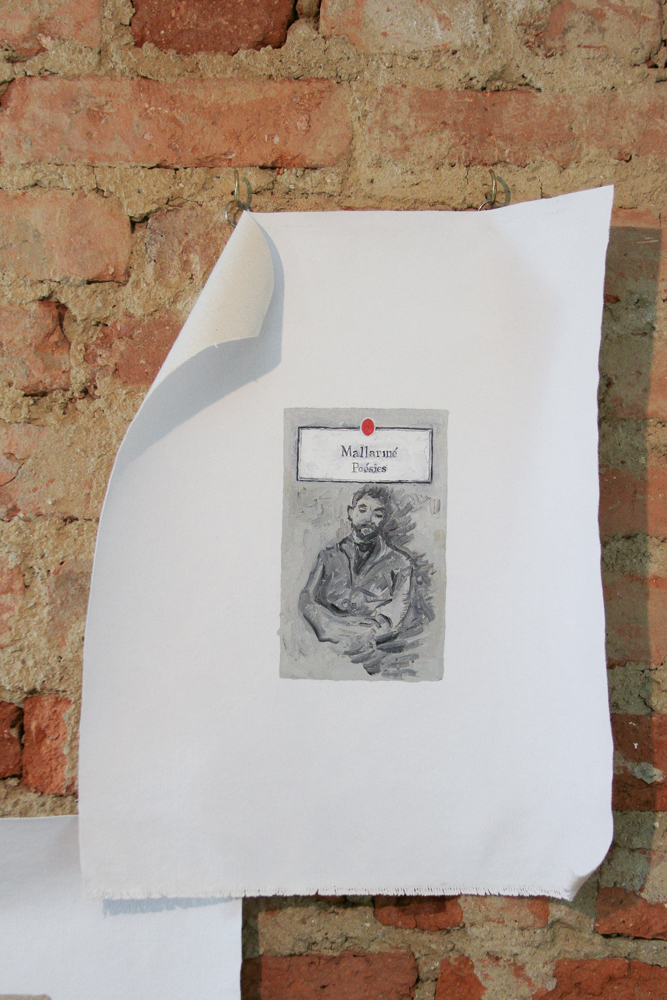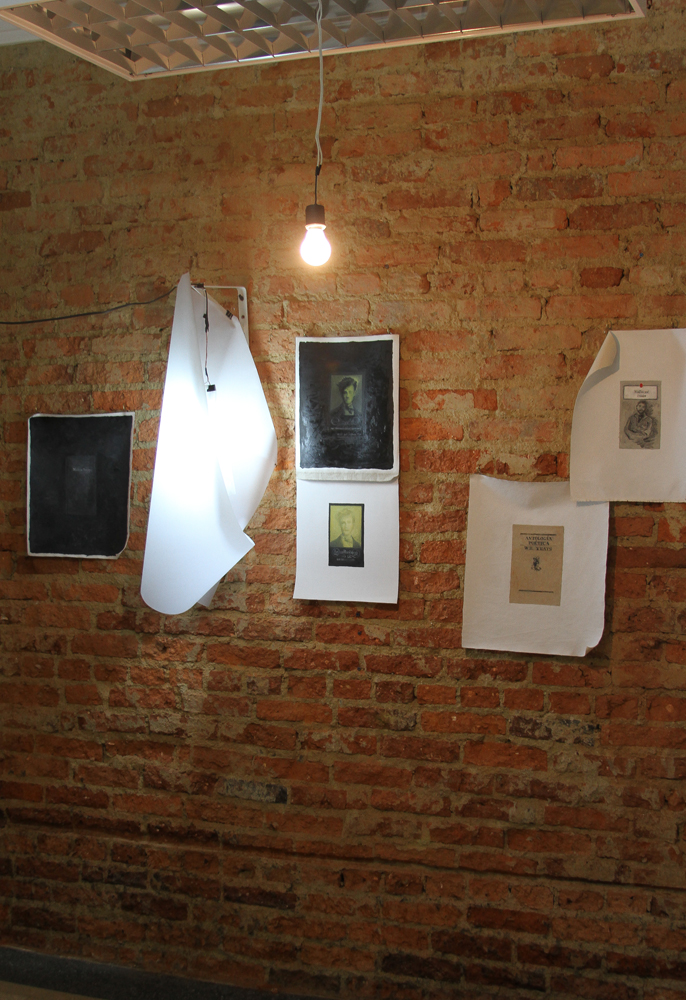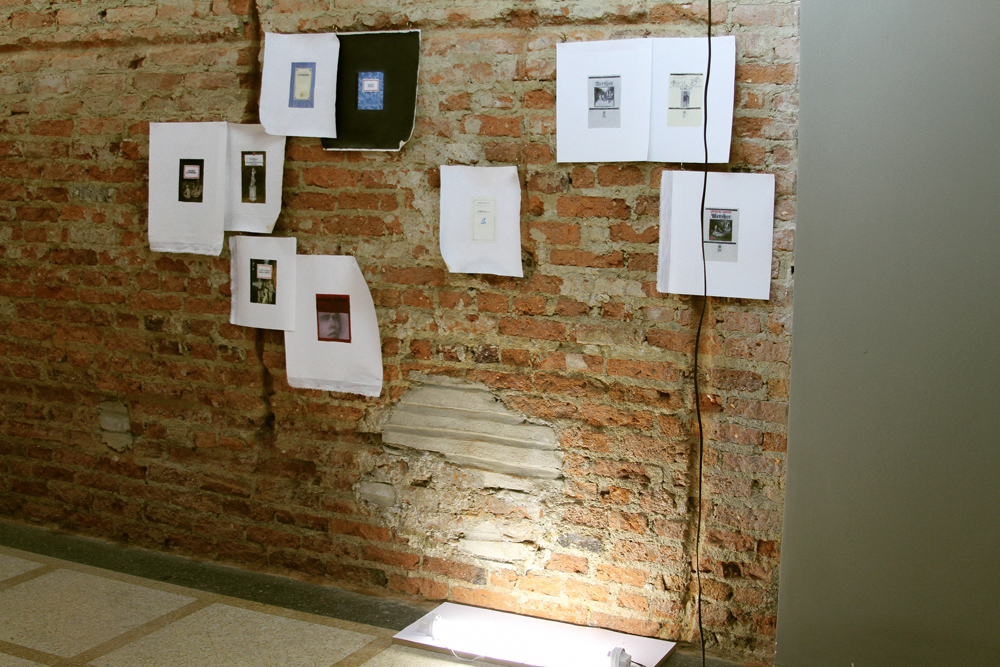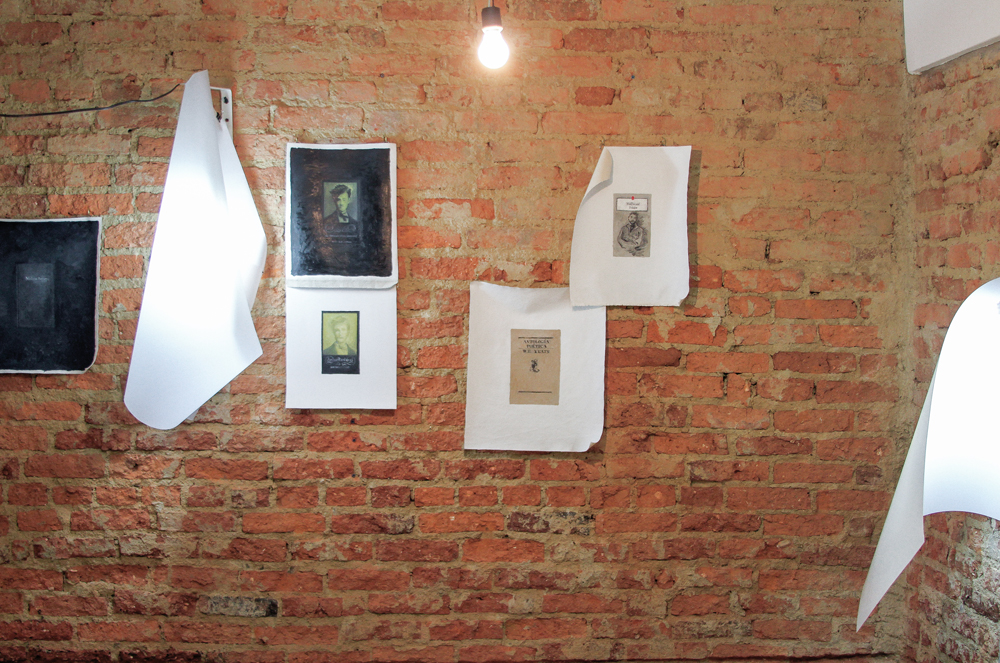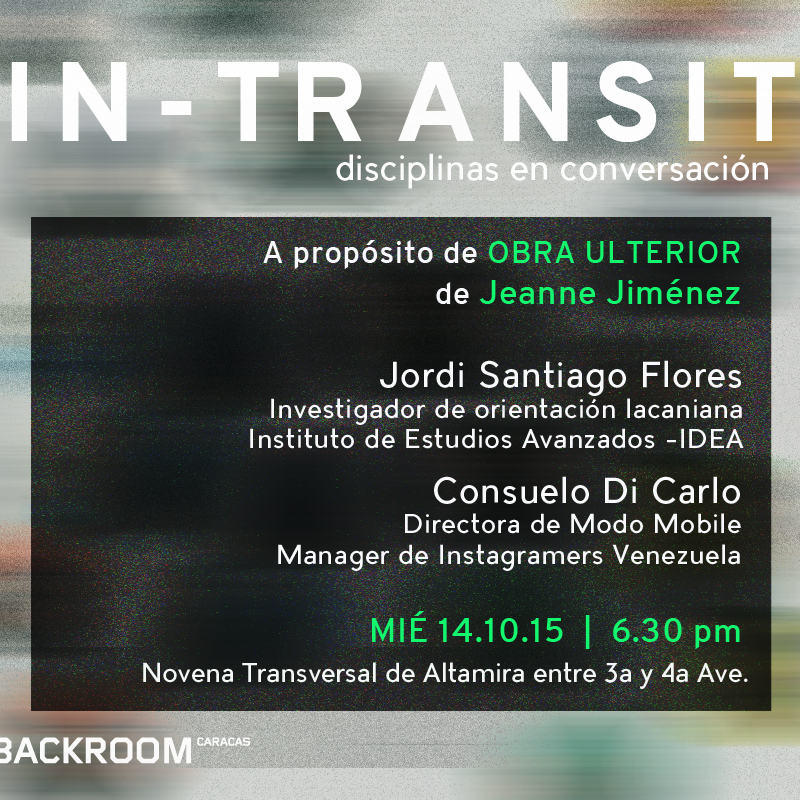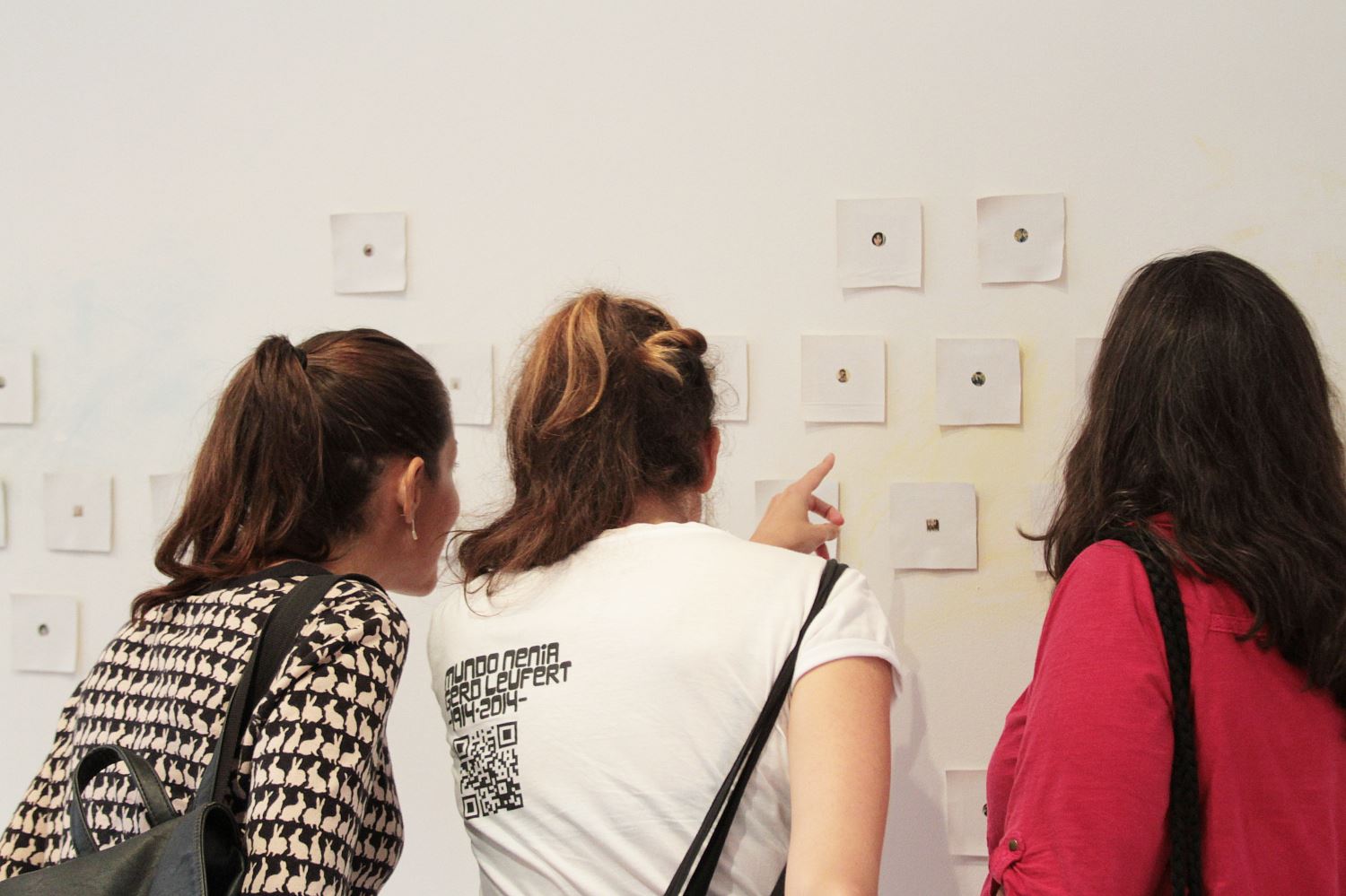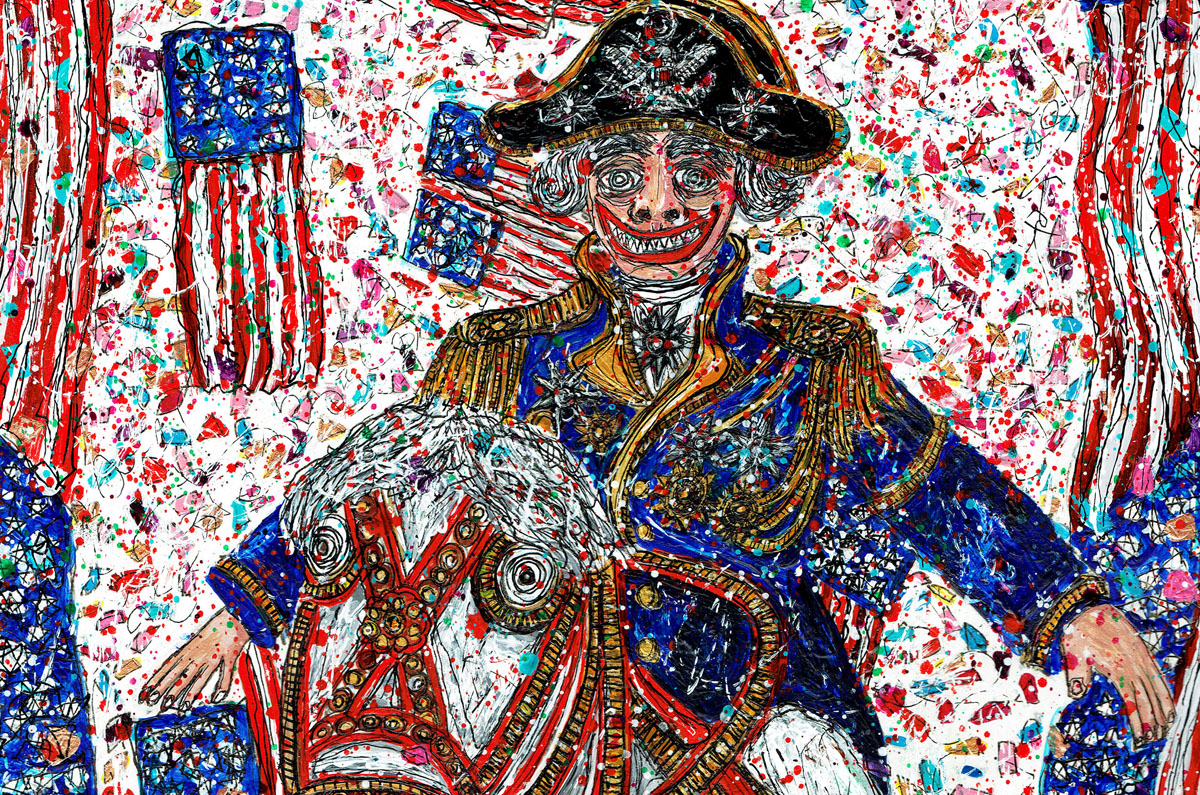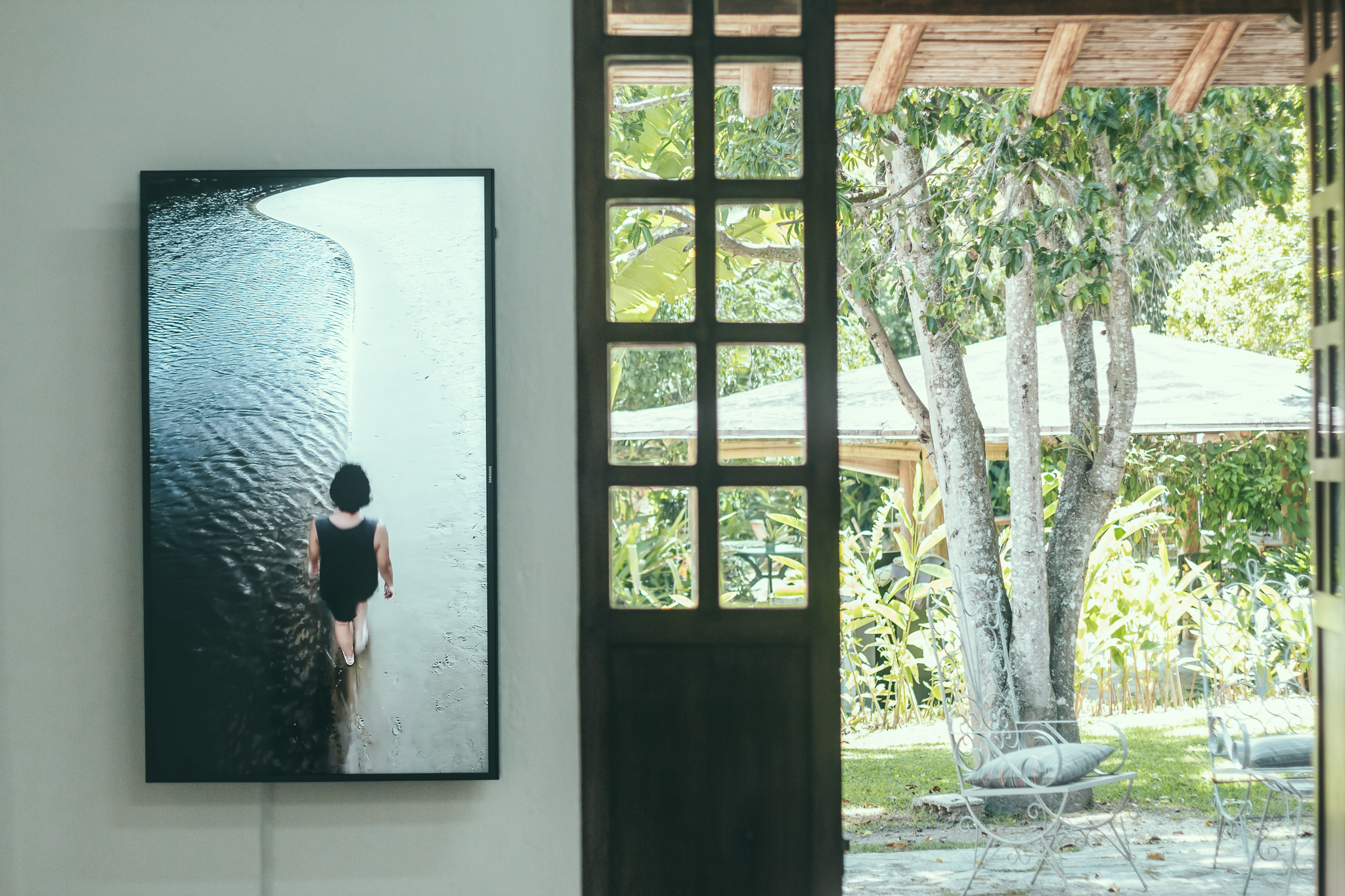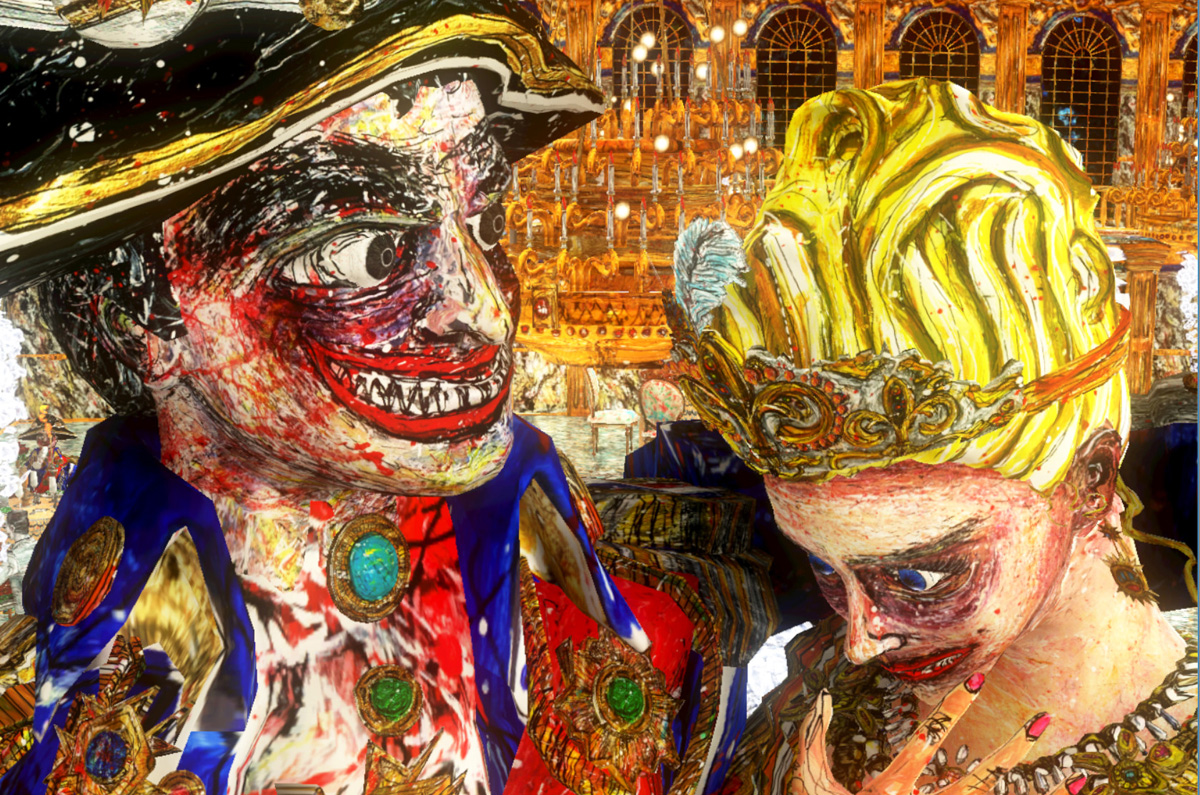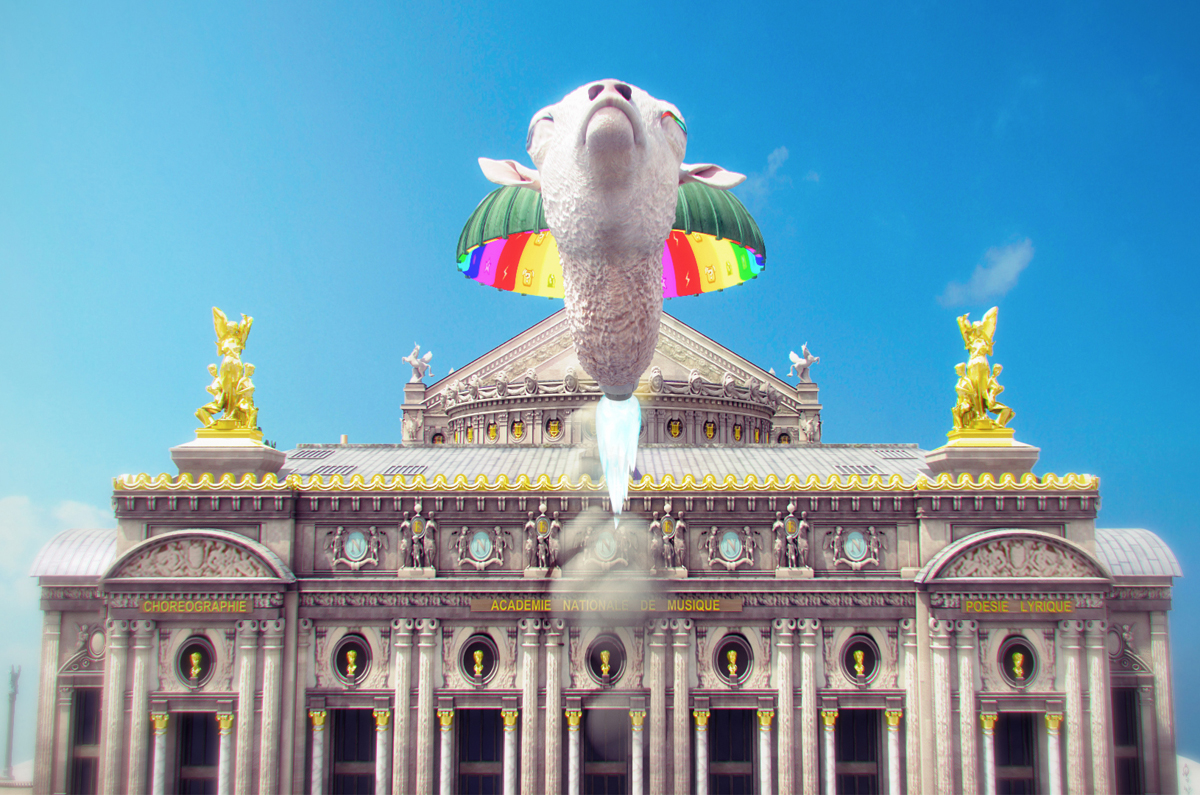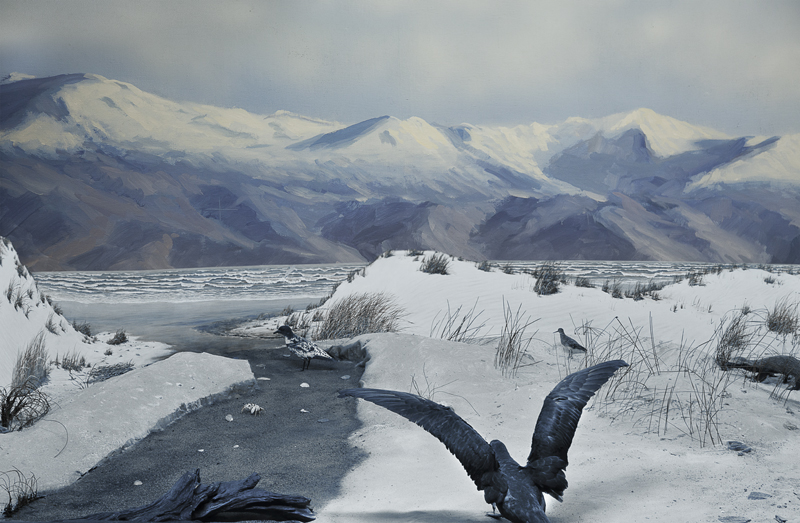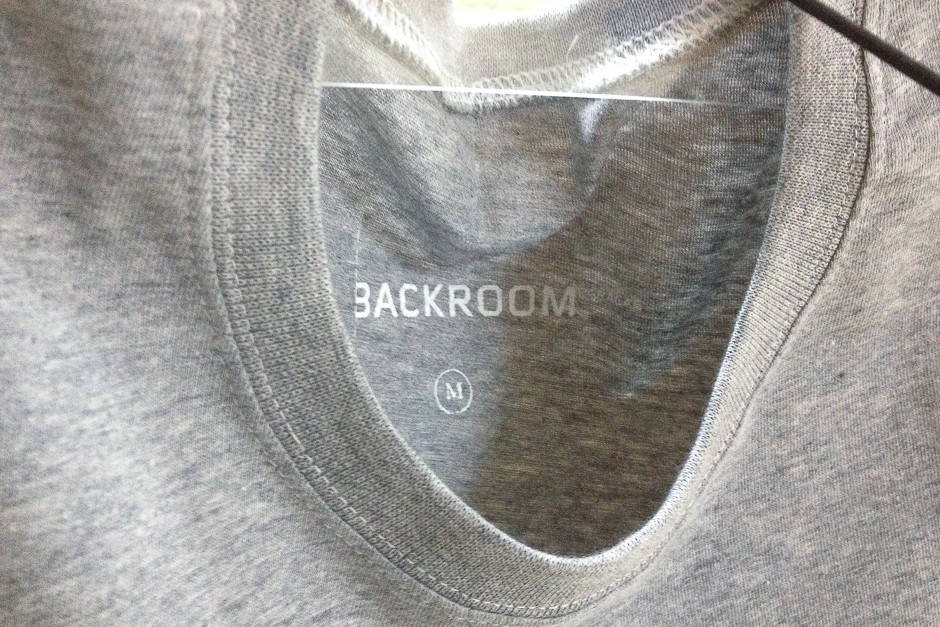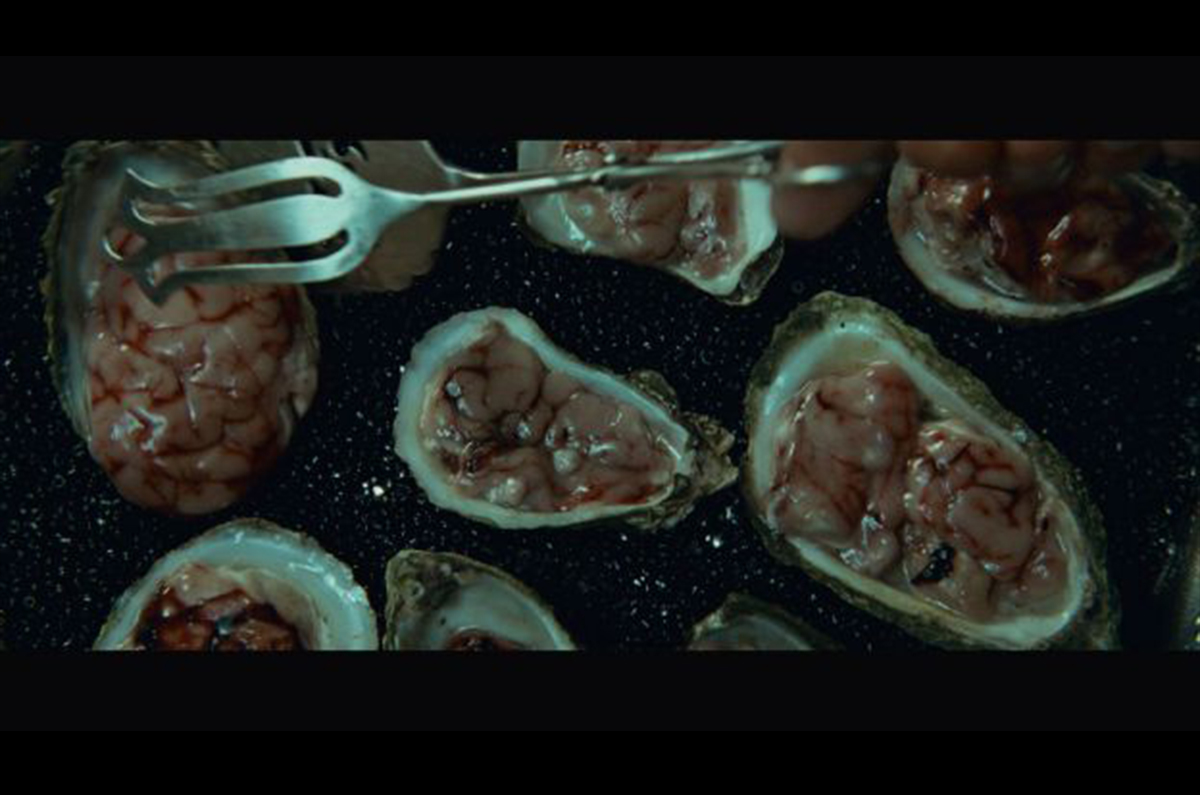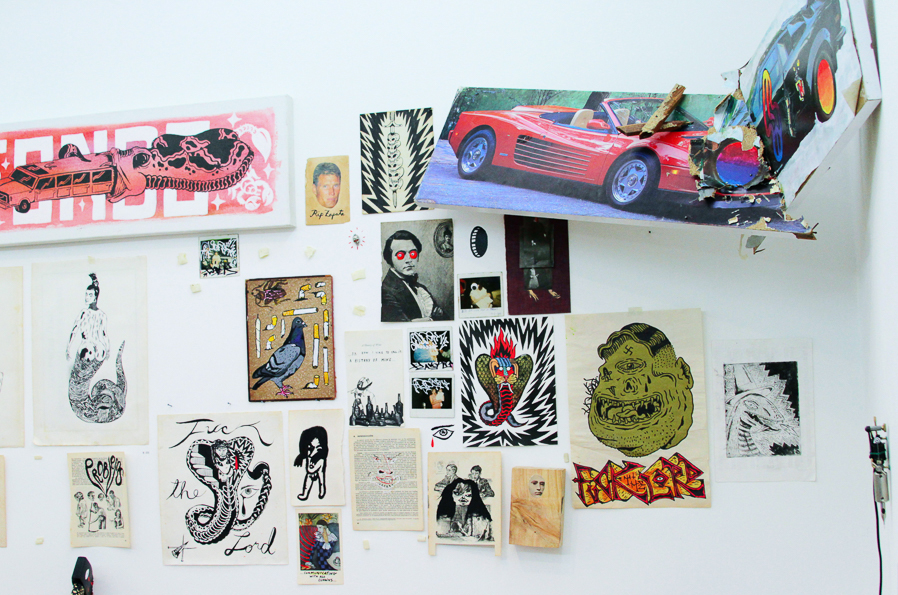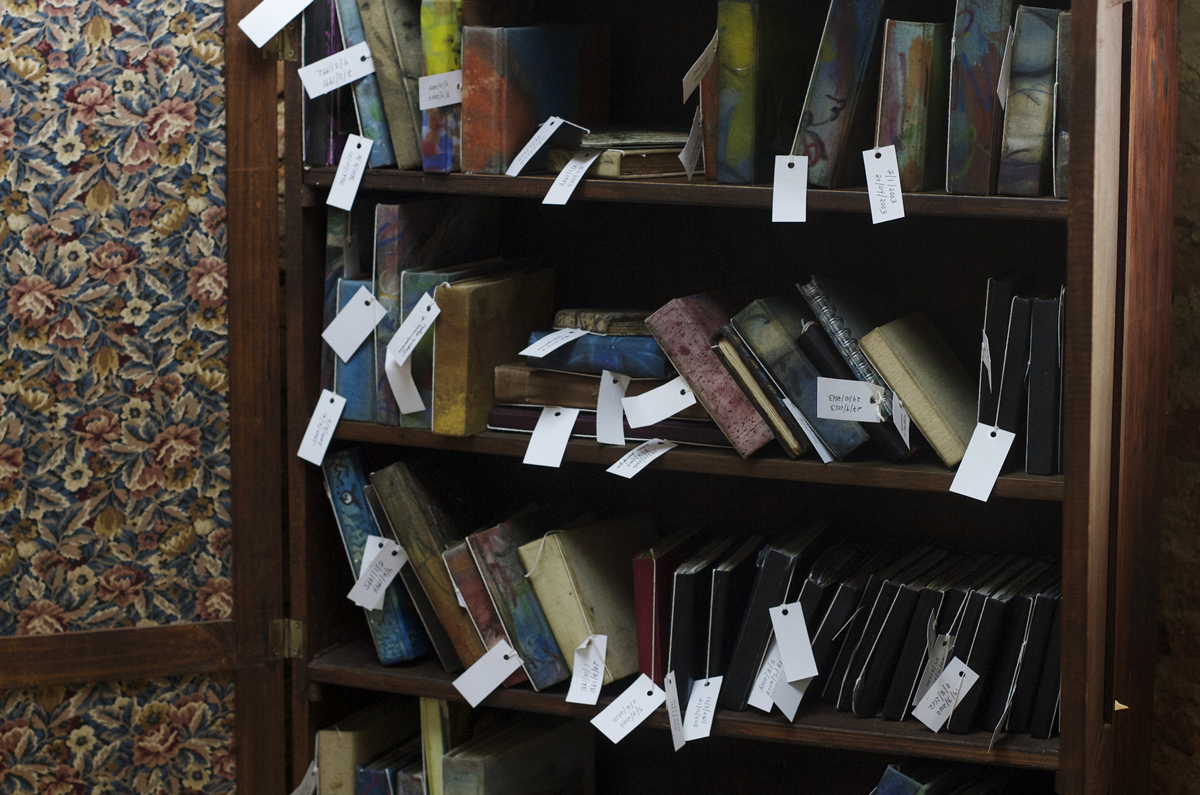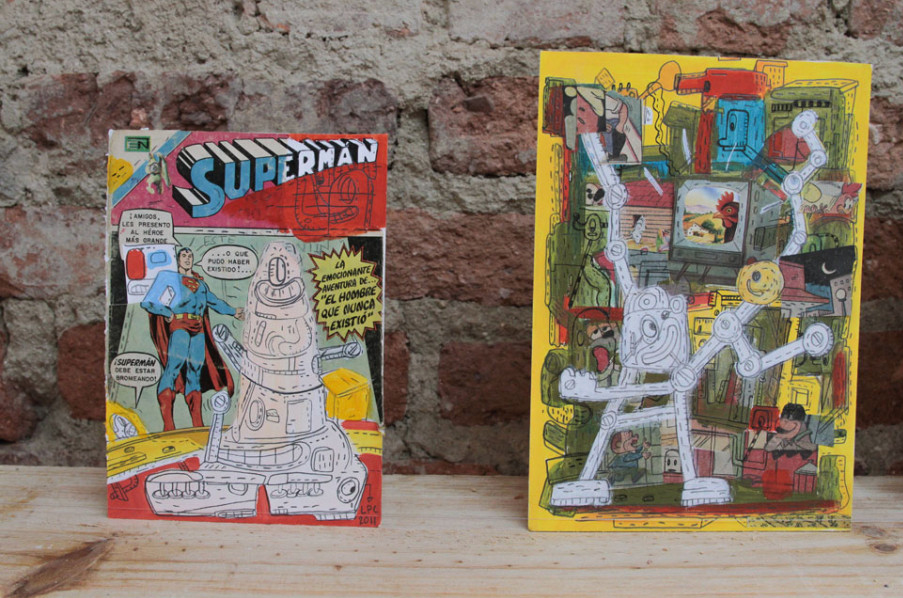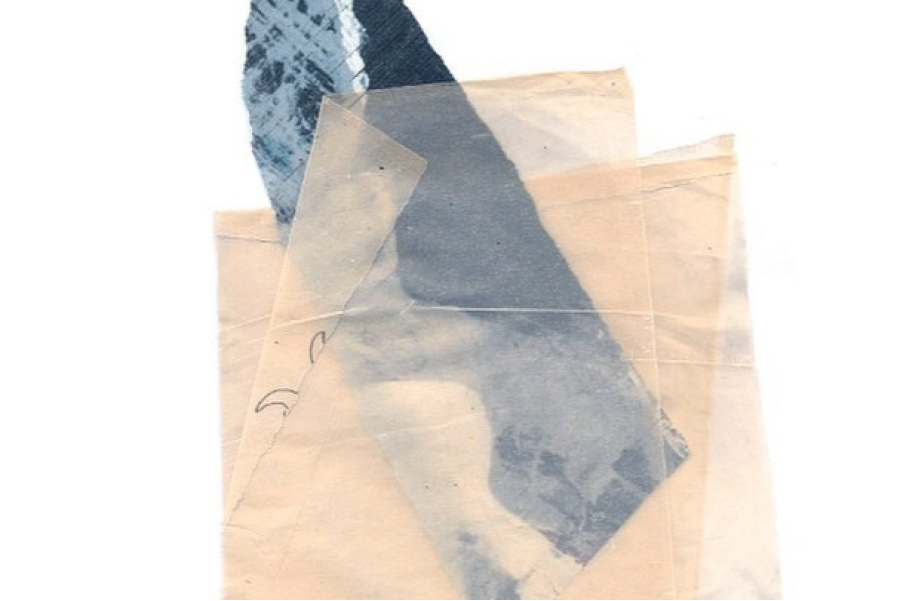Obra Ulterior brings together two lines of work that begin at the same vanishing point: A cluster of characters and a cluster of books that seem to reveal in the artist the attention of a collector and a voyeur. Jeanne Jiménez portrays the profile photos of her Twitter and Instagram contacts, signaling the imprint of these avatars in the new record of our imagery.
The incidence of technology and the dynamics of social networks are conceptual elements that the artist aggregates to her explorations around portraiture. Pixelated figurations receive the treatment of the brush, which, behind her firm stroke and controlled palette, compose a reflection around the identity of human beings, much like page breaks within art history.
The series of portraits that Jiménez exhibits in Obra Ulterior is an open work. Life-size makes them off-screen miniatures, just the right size for an artist who claims not to believe in large format. This, she confesses, is also a vestige of her self-taught process: the books with which she studied the paintings of Rubens, Turner or Delacroix were only a few centimeters tall.
Book covers, also rendered with the formality of the pictorial genre, point to the stimuli of cursed poets and characters such as Shakespeare’s Hamlet or Goethe’s Werther—epitomes of man submerged in doubt—. Her reinterpretation of Kafka’s Metamorphosis seems to announce the turn that her work has taken with Obra Ulterior. When exercising appropriation through the covers of these books, Jiménez exposes an iconography of her own—slits through which to glance at a personal projection.
Exhibition design and mounting: Gaëlle Smits.
Lighting: Anton Ceballos and Iván Guzmán.
IN-SITU TEXT
By Erik Del Bufalo
A portrait, if freed, can reach the dubious pretension of meaning to imitate the subject it portrays. It may even harbor the illegitimate ambition to become someone’s identity. This tremendous power of the portrait manifests itself in a contradictory way. On the one hand, it becomes the mirror that is fixed, tattooed, forever attached to a real face: her mask. On the other hand, it is able to emancipate from its wearer and float like a photograph through unsuspected spaces. Our portrait, thrown into the world, separated from us, pretends to be us. Who might be looking at a photograph of us at this very moment, without us holding the slightest suspicion? This is why Plato so feared portraits, their mimetic vocation. However, despite his undeniable genius, the only solution he could find was not to allow poets and painters—portraitists privileged by the gods—to enter the ideal city.
Jeanne Jiménez discovers another solution. In her special manner, she continues to give way to the same solution implicit in all contemporary art, even before the first avant-gardes: to search for form and not for image, for concept and not for appearance; to evince the simulacrum and dismantle the pretensions of the copy, ever spurious, ever impossible in its eagerness to match what it claims to represent. In fact, one would have to be much more precise, and say that what is revealed in Jeanne’s work is not so much the speculative capacity of art, long liberated from the mirror and its mirage, as the simple and correct strategy of interpellation of the poet and the painter to re-appropriate, in an untimely or extemporaneous way, their time. Poetry and painting, the two inaugural sources from which the art of the visible arises, come to the aid of a new danger, the danger of a distance disguised as immediacy; the false immediacy of social networks wherein lies the appearance of a community in which we can only find ourselves as beings of the past, as memories and melancholies, never as future, discovery or destiny.
Social networks are the image of what we have already been, what we have already done, the exhibition of the photo that we already snapped, the story of the trip we already made, the commentary on the news that everyone already knows. In that community we can find eachother—that’s true–, but in a similar fashion to how the ghosts of an abandoned village are reunited. This danger is conjured by the forces of intimacy and returned to the world as a work of art: the work is always alive, incomplete, open, incessantly moving towards the future. The past is a photograph; the future is a poem. Oeuvre is the word the ancient Greeks employed to define the act of producing, of leading the real towards new designs.
This possibility of a future—that is, of a meaning always open to new interpretation—is perhaps the essence of poetry, the first form of the image’s surrender and of finding a meaning for the visible. Words are the first shelter of the image. To make visible that potency of the future in the creative act is the deepest sense of bringing to the visual what had previously been shown in the invisible, in language. Thus, Shakespeare, Goethe, Artaud, and Rimbaud are transported to the canvas of the manifest, to prove that truth is never what can be seen but that which makes visible. To see, to discover, to reveal is also to produce a space where a new closeness can appear. Rimbaud precisely said: «I am another.» Because what we call «I» may not be any image, no ghost in the mirror, no presumed identity in the perplexity of an ever-changing world. The «I» is invisible, so the sentence «I is another» means the possibility of otherness—which is also us—coming to meet us and not only imagining us: that it may dream us in the thick darkness of the distance that is hidden behind our computer, behind our tablet or mobile phone.
To paint poetry and to make poetry in the midst of painting is to release the faces trapped in the virtual mechanics of photographs. Tiny photos, which can barely be called photographs. As in any identity document, they say nothing, they express nothing, they only function as avatars, identifiers, traces of a presence in the vastness of the universe of social networks. We know nothing of our acquaintances; that is the truth of our certainties. However, this fundamental ignorance precisely hides the possibility of a real encounter with the other; an encounter that we do not hold with the past, with memory, but with the future, with the finding. Every future may only be the subsequent work of a secret and past struggle, such as the works here exposed, which rest on many other works by Jeanne Jiménez, and which were secretly able to win the battle and find the emergence of a destiny worthy of being exhibited.
On the horizon of that clandestine, intimate, reserved struggle, the artist constructed her own resources in a self-taught way; that is, from a teaching about herself that led her to find the necessary elements to build the fabric of her work, as well as being able to give an account of the deep meaning that inspired her search. In the frontispiece at the entrance of Plato’s Academy, the following phrase could be read: «Do not enter anyone who does not know what he already knows.» For true knowledge comes only from an inner disposition, not from the world, from schools, from styles, or from fashions. Learning for oneself also means learning deeply from others and for others, insofar as the universal legitimacy of our limitations is recognized. But these limits are not deficiencies, but the need for truth to be something always unfinished, endless, without owner; in order find a place that, sheltering all, is always open to the unknown, always open to whoever––be them our neighbors or ourselves–– we are yet to know.
Jeanne Jiménez (Cardón, Venezuela, 1979) is a visual artist, with a degree in Graphic Design from the University of Zulia (2002). She completed basic studies of Philosophy at the Simón Bolivar University. She has been living and working in Caracas, Venezuela, since 2006. She recently participated in the X Salón Regional de Jóvenes Artistas (MACZUL-Museo de Arte Contemporáneo del Zulia, Maracaibo, 2014), where her work Follower Friends Twitter 1. Profile Pictures Series was awarded the second prize.
She has participated in other regional and national salons including the Salón de Jóvenes con FIA (Caracas, 2011), Salón Municipal de Artes Visuales Juan Lovera (Caracas, 2007), Salón Arturo Michelena (Ateneo de Valencia, 2005), and Salón de Artes Visuales del Zulia (Centro Bellas Artes, Maracaibo, 2004).
Her solo exhibitions include Autofiguraciones, pinturas de la imagen propia MMXI – MMXIII (Alliance Française at Maracaibo, 2013), and Narraciones heredadas, sueños construidos (Carmen Araujo Arte, Caracas, 2011).
She has also participated in group exhibitions and events dedicated to emerging art such as Arte Unido (MACZUL, Maracaibo, 2002, 2004, 2005), Velada de Santa Lucía (Maracaibo, 2004, 2005, 2006) , and Trance/Formance (Alliance Française at Maracaibo, 2004).
She has attended national and international artfairs with Carmen Araujo Arte, including FIA Caracas (2010), Pinta NY (2009), and ArteBA (Buenos Aires, 2010, 2011). Some curatorial invitations also include Pinturas Recientes (La Carnicería Arte Actual, Caracas, 2008), Minimal (Hotel Paseo Las Mercedes, Caracas, 2005), and Ene Incidentes: Entremilenios (Grupo Zaquizamí, Centro Bellas Artes, Maracaibo, 2001).
THIS MIGHT INTEREST YOU
Jeanne Jiménez talks about her show Obra Ulterior at Backroom Caracas [In Spanish].
Photos from the opening of Obra ulterior.






